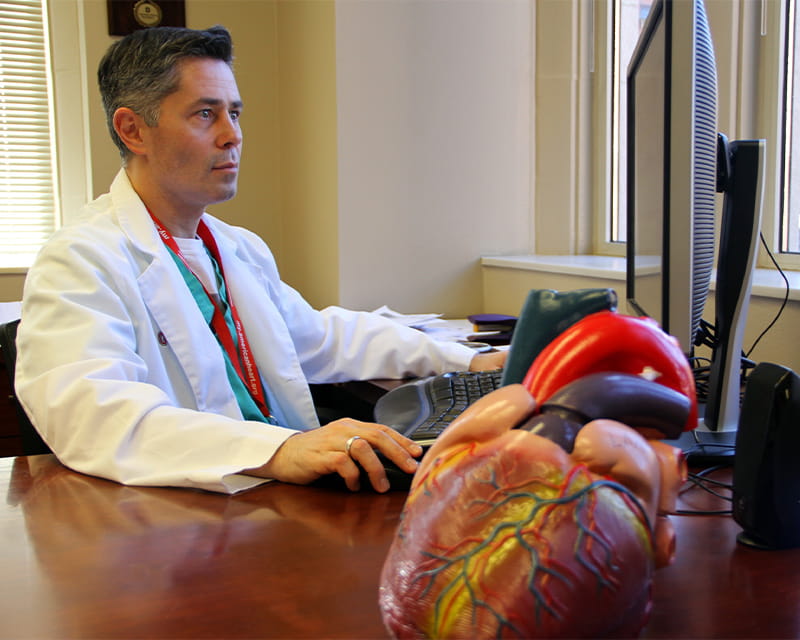
Safer Patient Transport
 The Ohio State University Wexner Medical Center is participating in a global clinical trial of an innovative therapy that reduces the size of the left ventricle without open-heart surgery. Interventional cardiologist Konstantinos Boudoulas, MD, is the principal investigator for the CORCINCH-HF study at Ohio State.
The Ohio State University Wexner Medical Center is participating in a global clinical trial of an innovative therapy that reduces the size of the left ventricle without open-heart surgery. Interventional cardiologist Konstantinos Boudoulas, MD, is the principal investigator for the CORCINCH-HF study at Ohio State.
“We are fortunate to be in a position at The Ohio State University to have the opportunity to participate in a variety of clinical trials evaluating groundbreaking therapies including the CORCINCH-HF study; this trial gives the ability to perform left ventricular restoration percutaneously,” Boudoulas says.
Approximately 50% of people with heart failure have reduced ejection fraction (HFrEF). In HFrEF patients, the left ventricle becomes enlarged and has decreased function.
Currently, HFrEF is treated with guideline-directed medical therapy (GDMT) and cardiac resynchronization therapy when appropriate.
The CORCINCH-HF Study is evaluating the safety and efficacy of the AccuCinch® Ventricular Restoration System, a minimally invasive, device-based therapy designed to improve the structure and function of the heart. During the AccuCinch procedure, a flexible implant is attached to the inner wall of the left ventricle and then cinched to reduce the size of the left ventricle and strengthen the heart wall.
The goal of the AccuCinch Ventricular Restoration System is to improve left ventricle function and clinical outcomes in patients with heart failure and reduced ejection fraction.
The ideal candidate for the trial will have their GDMT optimized and then undergo a computerized tomography (CT) scan to determine if their anatomy is suitable for the AccuCinch device. If so, they will have an echocardiogram and other baseline assessments.
If the patient meets study entry criteria, they are then randomized to either continue with optimized GDMT or receive the AccuCinch device plus optimized GDMT. Patients who continue with GDMT alone can cross over to the AccuCinch arm after their two-year follow up if they continue to meet the study entry criteria.
Patients are followed for five years. During the first year there are frequent assessments and then annual assessments to year five.
Heart failure prevalence increases with age, and it is anticipated that 8.5 million Americans will be diagnosed with it by the year 2030. If this device proves to be effective and receives Food and Drug Administration approval, it has the potential to provide an additional effective therapy to HFrEF patients.

Safer Patient Transport

New treatment for atrial fibrillation

First US Medical Center in Clinical Trial